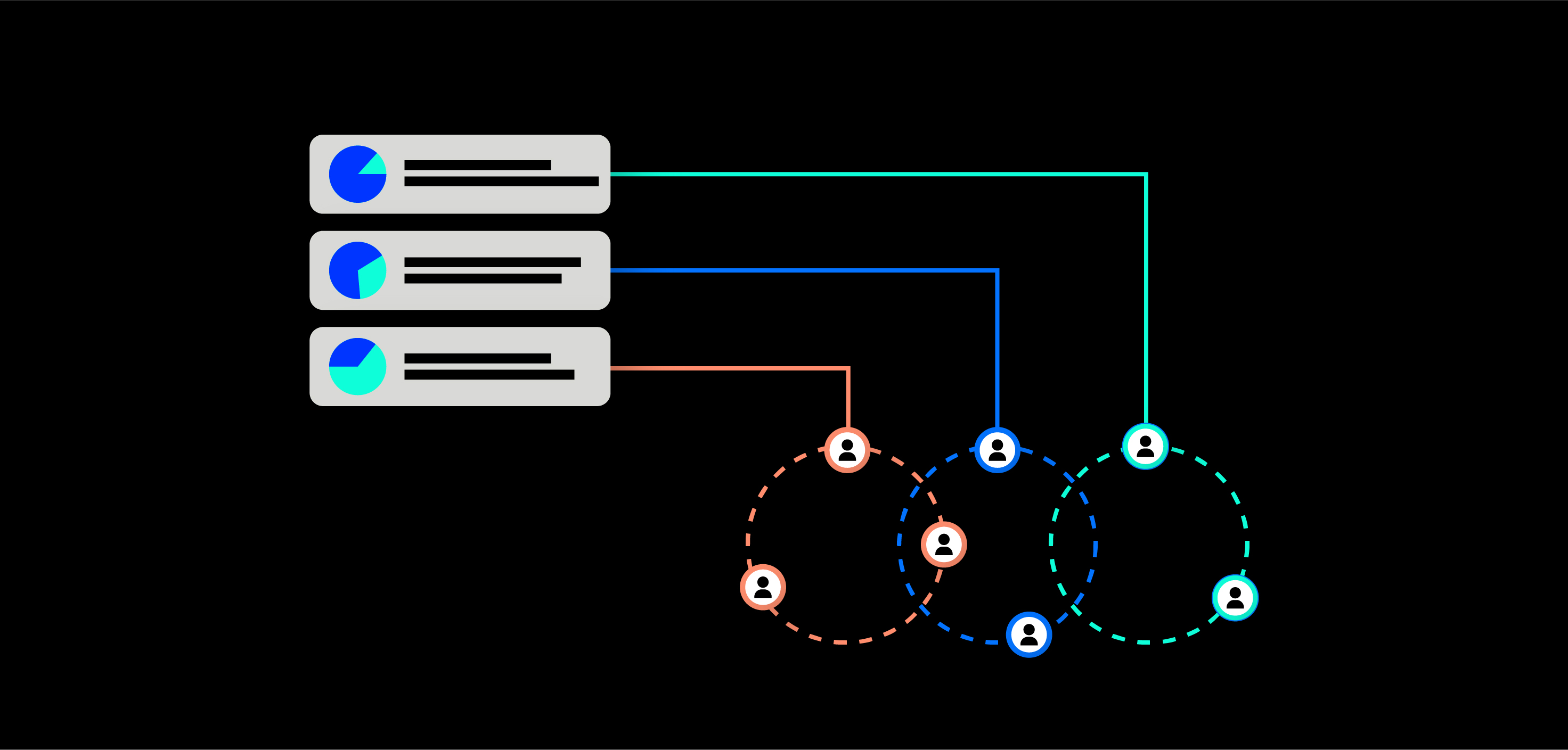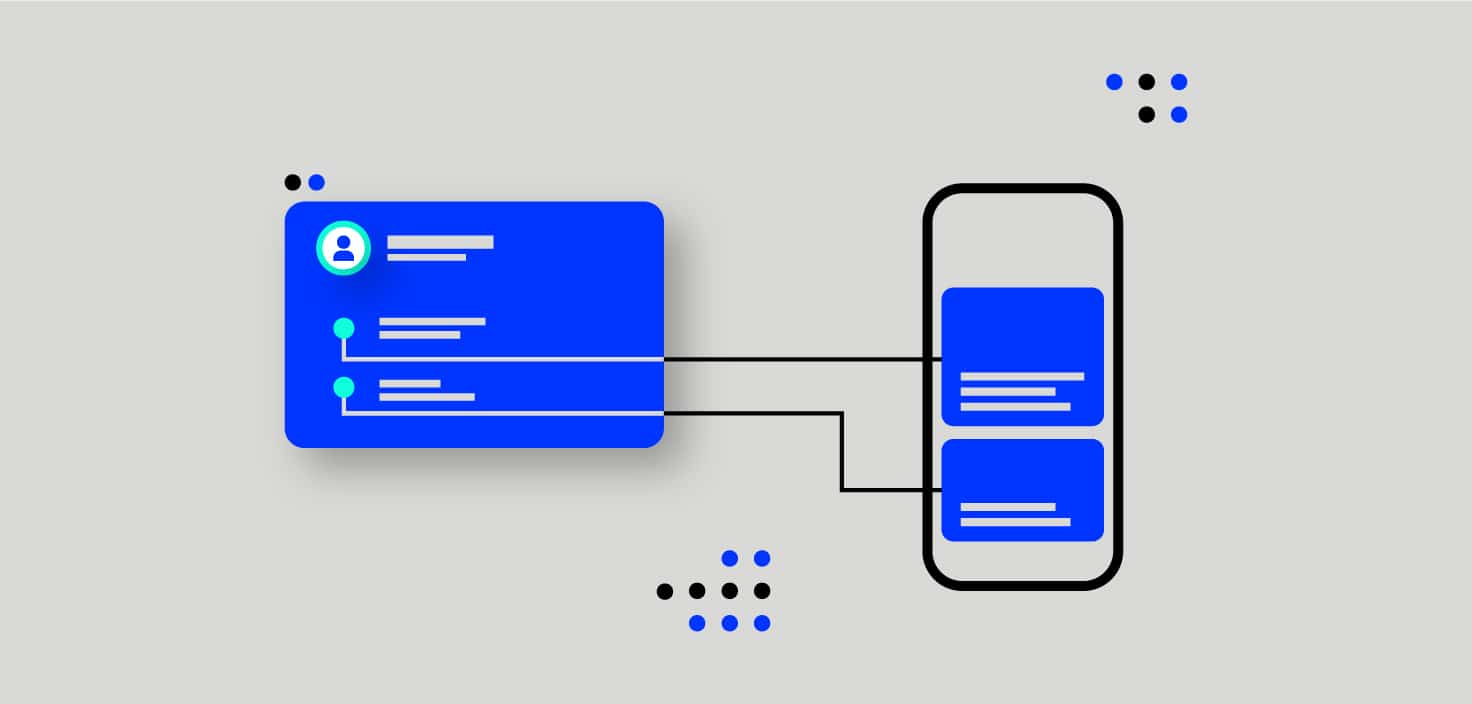How to create amazing customer omnichannel experiences with omnichannel engagement
- Reading Time: 7 minutes

Sign up
to drive your business with the power of data
There’s such a plethora of new channels coming out every day of the week it can be difficult to keep track of all of them. Remember back when people thought MySpace would be a thing? Or when people thought TikTok would NOT be a thing? Now, every brand is fighting other brands in their market to see who can capture the next wave. Every market is saturated, and audience profiles are more diverse than ever. This diversity may mean that there’s more potential customers, but it also means it’s harder than ever to find them. Gone are the days where locals went to the one single local shop and bought whatever they were offered. There’s now infinite spots to shop from, but also infinite means through which people find those shops.
That’s all why 87% of brands have learned that it’s critical to engage their customers across a number of different channels. It’s not because some customers use one channel and other customers use another. It’s because customers themselves are used to living a “multi-channel” existence. In fact, according to PWC, 80% of companies see an omnichannel approach as critical to their business. The International Data Corporation (IDC) has shown that consumers who are engaged using an omnichannel approach reach a 30 percent higher lifetime value over those engaged with just one channel. But let’s back up a second, what exactly is omnichannel marketing?
What is Omnichannel marketing?
As referenced above, the customer journey no longer begins and ends on one channel. Customers engage with companies on and across multiple channels, possibly starting their journey on one channel and continuing on another. Customers are more and more accustomed to researching a company and a product, online and/or in person.
Omnichannel marketing is the name given to the ways in which companies synchronize their message across multiple channels to create a single journey that remains personalized and contextual. This means that technology infrastructure needs to incorporate anywhere from 6 to 20 different points along a journey. This means that maybe your customer connects with your first through social media on their phone and then to your company website from their desktop and then the app through their tablet, and each touchpoint along the way needs to feel seamless and integrated or else you’re at risk of losing that customer.
How does Omnichannel marketing work?
Before you even get to the point of centralizing the data you collect, your brand needs to change its internal culture. This means a culture where every department within your brand is working together – obviously across multiple channels – towards a shared orchestrated campaign. A traditional setup where marketing and customer service don’t work together is no longer viable in the digital age.
Now, every department needs to ensure that information given to customers is completely consistently between channels. Why?
- If customers can’t understand or get mixed signals when they switch between channels, then obviously that’s a huge problem. According to the 2020 Gladly Customer Expectations Report, 71% of all consumers expect a consistent experience across all channels, and when they don’t receive it, it can lead high churn rates.
- It also means that data collection and a personalized omnichannel strategy are critical. Customers know that you’re gathering data on them, and the implicit tradeoff is that your brand will therefore be personalized for them. That means that the data you collect from different channels needs to be collated centrally and then fed back in a coherent manner for a wholly personalized experience.
- A lack of repetition across channels is really important. If customers have to repeat information across channels then they can find that frustrating. This shouldn’t be confused with repeating your own message. It’s important to keep your own message consistent and repetition of your own message can be a benefit, provided you’re not annoying your customer by bombarding them with more than they’d like. But asking THEM to be repetitive is another issue altogether. Asking customers to input the same data every time they come in contact with your company on a new channel is a sure-fire way to lead to churn. This is why, once you have their data from one source or channel, it’s important to centralize it and feed it across other channels so the customer sees that you recognize them regardless of where they come in contact with you next.
How omnichannel marketing improves the customer experience
One of the simple, obvious advantages of omnichannel marketing is that it allows you to deliver your product in any set of ways that is most convenient for them personally. As customers are aware that they have a vast array of options available to them, so you have to know that they’ll want to pay in different ways and interact with your brand in different ways at different times, and all of that has to be available whenever and wherever your customer wants.
Customer segmentation is critical to this process, as you can segment customers off into different types, knowing which customers are more likely to interact in one way and which are more likely to interact in another. Performance marketing does this by taking all the data you acquire, then determines the appropriate strategy using this data.
4) The improved insight into the customer experience
Marketers have been well aware of the importance of data for decades. Omnichannel marketing gives you a load of data from a number of different sources so you can collate it all together. It also gives you a full understanding of how different channels correlate to different parts of the journey. In particular, omnichannel marketing data can give you the insights into what exactly leads to all important clicks and completion. All the data means that you can be proactive in figuring out what strategies will be most effective going forward for you to grow your business.
5) Expanded customer experience
After you’ve accomplished all of this, it’s time to work out what to do next to expand the customer experience. You’ve got your team in place and you’re collecting data on your customers. You’ll find that you can further enrich this data using static data available on the web, which gives you both larger sample sizes to be more confident in your results, and also lets you double check to make sure your data is in line with industry standards and expectations. Much of the data you’ll take from external sources is already optimized, which allows you to constantly respond to the customer experience.
Following this, you’re in a position to begin using Artificial Intelligence and Machine Learning after you’ve tapped your own resources as deep learning processes. This lets you expand the ways in which you communicate with your customer, and the technologies available to you and gives you the tools for the technology you use to do the work for you to optimize and hone your processes. As your data set expands exponentially and infinitely, these further tools become more necessary to reach your goals and track patterns and trends. Essentially, you should get better at optimizing and burrowing down to your specific customers both with the more data you have, but also as your AI gets more and more used to handling the data you feed it.
Key Takeaways
Personalization, real-time contextual engagement, and a data driven analysis of the customer journey are all a critical part of targeting and retaining your customers. Omnichannel management is critical to this process, as it allows you to understand the customer journey and expand the customer experience. Dataroid can help in the support of your team by focusing on every step of the customer lifecycle and building a coherent omnichannel strategy so your customers can have a truly optimized customer experience.
YOU MAY ALSO LIKE
Drive your digital growth
Schedule a demo today to learn more on how we can help you unleash the potential of digital using Dataroid.






